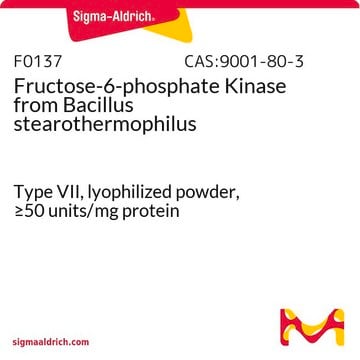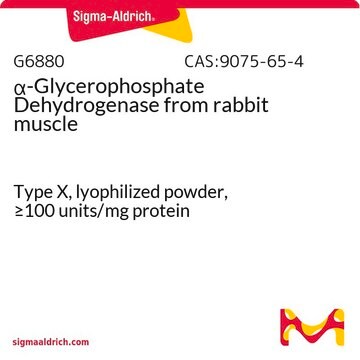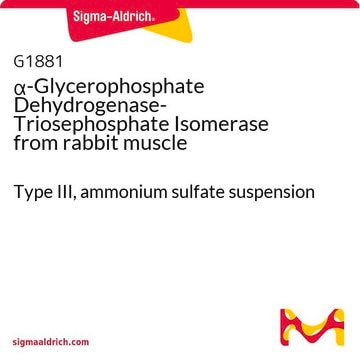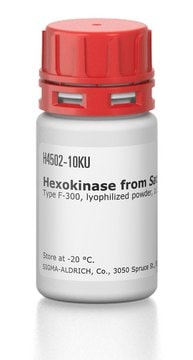F8381
Fructose-6-phosphate Kinase, Pyrophosphate-dependent from Propionibacterium freudenreichii (shermanii)
lyophilized powder, ≥4.0 units/mg protein
Synonym(s):
6-Phosphofructokinase(pyrophosphate), Pyrophosphate: D-fructose-6-phosphate 1-phosphotransferase
About This Item
Recommended Products
form
lyophilized powder
Quality Level
specific activity
≥4.0 units/mg protein
composition
Protein, 5.0-25.0% biuret
storage temp.
−20°C
Application
Biochem/physiol Actions
Other Notes
Unit Definition
Physical form
signalword
Danger
hcodes
Hazard Classifications
Eye Dam. 1 - Repr. 1B - Resp. Sens. 1 - Skin Corr. 1C
Storage Class
6.1C - Combustible acute toxic Cat.3 / toxic compounds or compounds which causing chronic effects
wgk_germany
WGK 3
flash_point_f
Not applicable
flash_point_c
Not applicable
ppe
dust mask type N95 (US), Eyeshields, Faceshields, Gloves
Choose from one of the most recent versions:
Already Own This Product?
Find documentation for the products that you have recently purchased in the Document Library.
Customers Also Viewed
Active Filters
Our team of scientists has experience in all areas of research including Life Science, Material Science, Chemical Synthesis, Chromatography, Analytical and many others.
Contact Technical Service














